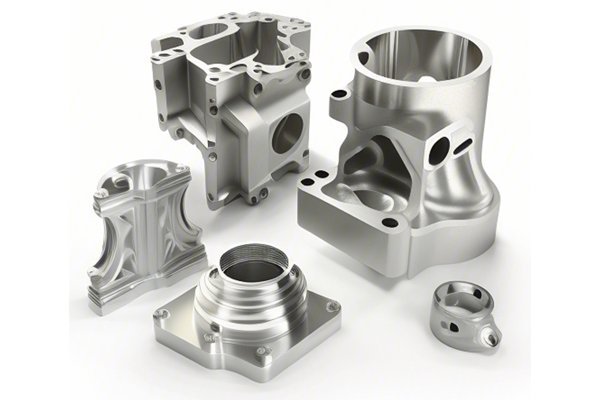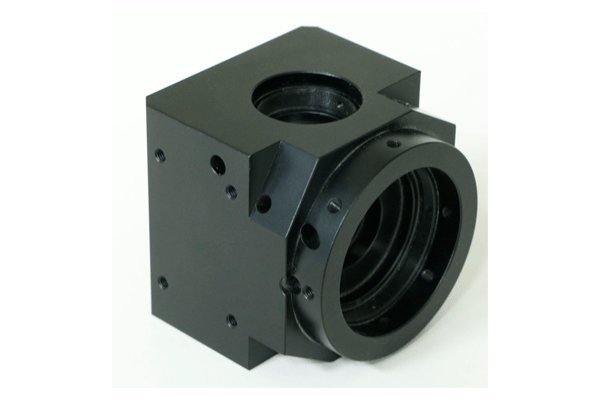Did you know that the global CNC machining market is expected to surpass $100 billion by 2025? This extraordinary growth is largely driven by revolutionary technologies that optimize production efficiency and accelerate time-to-market for new products. As industries such as aerospace, automotive, and consumer electronics evolve, the need for fast, precise, and iterative prototyping methods has grown exponentially. In this context, the evolution of CNC (Computer Numerical Control) prototypes has emerged as a game-changer, offering significant advantages over traditional mold-making methods.
In this comprehensive guide, we will dive deep into the realm of CNC prototyping against traditional mold making, exploring the benefits, processes, and implications of adopting CNC prototypes in your manufacturing strategy. By the end of this blog, you’ll have a well-rounded understanding of why CNC prototypes could be your next step toward innovation and efficiency.
What is CNC Prototyping?
CNC prototyping refers to the process of utilizing CNC machinery to create prototypes quickly and accurately. Unlike traditional methods that often rely on manual labor and fixed tooling, CNC machines are computer-controlled, allowing for high precision and repeatability. They can work with various materials, including metals, plastics, wood, and composites, making them incredibly versatile for different industries.
The Technology Behind CNC Machines
CNC machines operate on a straightforward premise: a computer program precisely controls the movements of machinery to cut, shape, or mold materials according to specified dimensions. Key components typically include:
Applications of CNC Prototyping
CNC prototyping finds applications across various sectors:
Overview of Traditional Mold Making
Traditional mold making involves producing parts by creating molds from durable materials, often metal, into which liquid materials (such as plastic, resin, or metal) are poured or injected. This process is generally used for mass production where consistency and quality are critical.
Typical Processes Involved
The traditional mold-making process entails several steps:

Limitations of Traditional Mold Making
While traditional mold making has been around for decades, it entails several limitations:
In contrast to traditional mold-making methods, CNC prototyping offers numerous benefits that can elevate your manufacturing processes.
Speed and Efficiency
CNC prototyping significantly accelerates the prototyping phase. Unlike traditional methods that require mould fabrication, CNC machines can produce parts almost immediately after receiving design specifications.
Precision and Detail
CNC machines are capable of achieving tolerances as tight as ±0.01 mm. This enables manufacturers to create complex geometries and intricate details that may be challenging or impossible with traditional methods.
Flexibility and Customization
In CNC prototyping, alterations can be made swiftly without the need to redesign an entire mold. This flexibility fosters continuous improvement and rapid iteration based on testing feedback.
Cost-Effectiveness
Although the initial investment in CNC machinery can be high, the reduced labor costs and shortened time-to-market can lead to overall savings. In many cases, the cost per unit also decreases with CNC machining as the volume increases.
Reduced Lead Time
The time saved in CNC prototyping provides businesses with a competitive edge, allowing them to respond faster to market demands and shorten product development cycles.
Improved Iteration Capability
Rapid prototyping means that changes can be tested in real-time, enhancing the product development loop. This results in better final products tailored to customer preferences.
Aerospace Industry
In aerospace, the stakes for precision and efficiency are incredibly high. Companies like Boeing utilize CNC prototyping for critical component development, allowing them to reduce lead times and testing cycles significantly. By iterating designs quickly, they can fine-tune parts for optimal performance while maintaining compliance with stringent regulations.
Consumer Electronics
The fast-paced consumer electronics industry thrives on innovation. Companies such as Apple leverage CNC prototyping to rapidly design and refine new products. The ability to produce prototypes in-house enables them to quickly gather consumer feedback and make necessary adjustments, leading to market-ready devices that resonate with users.
Medical Devices
The medical industry demands the highest quality and performance standards. Firms engaged in medical device manufacturing, such as Medtronic, have adopted CNC prototyping to develop complex surgical instruments. This technology allows them to create fully functional prototypes that can be rigorously tested while ensuring patient safety.
Steps to Transition to CNC Prototyping
Transitioning to CNC prototyping can seem daunting, but the steps below can simplify the process:
Overcoming Challenges in Implementation
Transitioning to CNC prototyping can present challenges, such as needing a skilled workforce. Investing in training and development programs can help mitigate this issue and optimize operational efficiency.
Selecting the Right CNC Technology
There are various CNC technologies available, including:
Future Trends in CNC Prototyping
The future points toward even greater advancements: the integration of AI and machine learning can enhance CNC programming, while additive manufacturing could open up new applications for prototyping, allowing engineers to experiment with further cutting-edge materials.
In this comprehensive analysis, we’ve explored the significant advantages of CNC prototyping versus traditional mold making. The ability to produce high-quality, precise prototypes quickly and cost-effectively has transformed numerous industries, from aerospace to medical. As manufacturing technologies continue to evolve, integrating CNC prototyping into your operations can not only enhance efficiency and flexibility but also drive innovation.
The discussion surrounding CNC prototyping is essential for manufacturers who wish to adapt to increasingly dynamic market demands. It encourages companies to rethink their strategic approaches in producing new products, ultimately leading to better customer satisfaction and business success. As you ponder the information shared in this blog, consider the profound impact that shifting towards CNC prototyping could have on your organization’s bottom line and growth trajectory.
—






